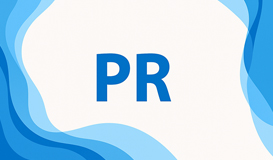In 2025, federal housing assistance programs such as Section 8 are undergoing significant changes that will affect both landlords and tenants. As new regulations and budget adjustments roll out, property owners participating in the Housing Choice Voucher Program must stay informed about how these changes may impact their rental operations and responsibilities.
Among the proposals under review is the potential of cutting the HUD budget almost in half, which could limit voucher availability, delay payment processing, and increase reliance on state-managed housing initiatives. Landlords are advised to review program updates closely to adapt effectively and continue offering stable, affordable housing.
What Is Section 8 Housing?
Section 8, officially known as the Housing Choice Voucher Program, provides rental assistance to low-income families, older adults, and individuals with disabilities. Instead of living in public housing, qualified tenants can choose their own housing in the private market, and the government pays a portion of their rent directly to landlords.
This differs from Section 42 housing, which ties affordability to specific units through tax credits rather than tenant-based assistance. With Section 8, tenants can move freely, and landlords retain control over screening and lease enforcement.
Key Section 8 Landlord Requirements in 2025
To rent to Section 8 tenants, landlords must comply with several federal and local guidelines:
1. Pass a Health and Safety Inspection
Each rental unit must meet HUD’s Housing Quality Standards (HQS). Inspectors from the local Public Housing Authority (PHA) evaluate the property before a tenant moves in, checking for safety, functionality, and habitability.
Common inspection areas include:
-
Working electrical and plumbing systems
-
Secure doors and windows
-
Lead-free paint (especially in older buildings)
-
Clean and safe stairways, proper ventilation
2. Charge a Reasonable Rent
The rent you charge must be in line with similar units in the local market. The PHA conducts a comparison to ensure your rent is fair and that government funds are not being misused.
3. Sign a Housing Assistance Payments (HAP) Contract
After passing inspection, landlords sign a HAP contract with the PHA to receive direct payments. You’ll also sign a standard lease with the tenant outlining their obligations.
4. Participate in Ongoing Inspections
Most PHAs conduct annual inspections or respond to tenant complaints. It’s your responsibility to maintain the property year-round so it continues to meet HUD standards.
5. Conduct Tenant Screening
While PHAs determine tenant eligibility for housing vouchers, tenant background screening is entirely the landlord’s responsibility. Screening protects your property and ensures that tenants are a good fit.
How to Effectively Screen Section 8 Tenants
Landlords often ask how to effectively screen Section 8 tenants without violating fair housing laws. Here’s how to do it right:
-
Use Consistent Criteria for All Applicants
Treat voucher holders and non-voucher applicants equally. Use the same screening process for everyone to remain compliant. -
Check Rental History
Contact previous landlords to ask about on-time payments, rule compliance, and property care. -
Verify Income and Employment
Although Section 8 covers most of the rent, the tenant still pays a portion. Verify their ability to cover this balance and any utilities. -
Conduct a Limited Criminal Background Check
Avoid blanket bans. Instead, focus on specific convictions that could affect the safety or integrity of your property. -
Evaluate Credit History with Context
Credit reports can be useful, but don’t disqualify applicants solely for low scores. Focus on trends like unpaid rent or recent evictions.
By following these steps, you can effectively screen Section 8 tenants while complying with housing regulations and protecting your rental investment.
Budget Reductions and Their Impact
Recent federal proposals aimed at cutting the HUD budget almost in half would significantly alter how housing assistance is administered. If implemented, these changes could reduce the number of available vouchers, slow approval processes, and shift funding decisions to state and local governments.
Proposed changes also include:
-
Shortened Assistance Timelines: Some voucher holders may face a two-year cap, increasing turnover for landlords.
-
Minimum Rent Requirements: Tenants may be required to pay at least $50/month, regardless of income.
-
Higher Tenant Contributions: Monthly contributions could rise from 30% to 35% of household income.
Implications for Landlords and Tenants
For Landlords:
-
More frequent tenant turnover may lead to higher vacancy rates.
-
Increased administrative responsibilities with PHAs.
-
Greater need for thorough tenant background screening to avoid costly evictions or damage.
For Tenants:
-
Shorter housing support durations could lead to instability.
-
Higher rent contributions may stretch already limited household budgets.
-
Reduced federal support might force relocations or increase eviction risks.
Best Practices for Navigating the Section 8 Program
To stay ahead in 2025 and beyond, landlords should:
-
Stay informed about HUD updates
-
Prepare units for inspections proactively
-
Document all communications and inspections
-
Maintain properties year-round, not just before PHA visits
-
Treat all applicants with fairness and respect
Conclusion
As housing assistance programs shift and budgets fluctuate, landlords must remain adaptable. While changes such as cutting the HUD budget almost in half present challenges, they also reinforce the need for smart property management, consistent tenant screening, and strong working relationships with PHAs.
With proper preparation and a commitment to fair housing, landlords can continue to succeed in the Section 8 program—offering valuable support to families while protecting their own business interests.







